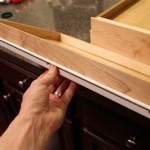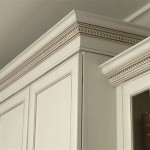Staining cabinets is a great way to give your kitchen a polished, professional look. Whether you’re refinishing existing cabinets or installing brand-new ones, staining can be a tricky process. When it comes to cabinets that have already been stained, the process can be even more challenging. Here’s what you need to know to achieve a beautiful, professional finish.
The first step is to make sure that the cabinets are properly prepared. For cabinets that have already been stained, the surface may be slick and difficult to work with. It’s important to sand the surface thoroughly to ensure that the new stain will adhere properly. Start with a coarse-grit sandpaper to remove any loose or flaking material, then move up to a finer-grit paper to smooth out the surface. Be sure to sand along the grain for best results.
Once you’ve sanded the cabinets, you’ll need to clean them. A damp cloth should be enough to remove any dust or debris. If there are any stubborn spots, you can use a mild cleaner or degreaser. Be sure to let the cabinets dry thoroughly before proceeding.
Next, you’ll need to apply a base coat of stain. This will provide a consistent color and will help to even out any discrepancies in tone. Be sure to use a brush specifically designed for staining, and don’t forget to wipe away any excess stain. Allow the base coat to dry completely before applying the topcoat.
Once the base coat has dried, you’re ready to apply the top coat. This will provide a beautiful, professional finish. Start by brushing on the stain in the direction of the grain. As you work, be sure to wipe away any excess stain. You may need to apply a second or third coat, depending on the desired color and finish. Allow each coat to dry completely before applying the next.
Once the top coat has dried, you’ll need to seal the cabinets. This will protect them from scratches and wear, and will also help to lock in the color. You can use a sealer specifically designed for staining, or you can use a polyurethane sealer. Be sure to follow the manufacturer’s instructions for best results.
Finally, you’ll need to buff the cabinets with a soft cloth. This will help to remove any dust or debris that has settled on the surface. Be sure to buff in the direction of the grain for best results.
Staining cabinets is a great way to give your kitchen a polished, professional look. With a few simple steps, you can achieve a beautiful finish on stained cabinets. Just be sure to take your time and follow the steps outlined above for best results.










Related Posts








